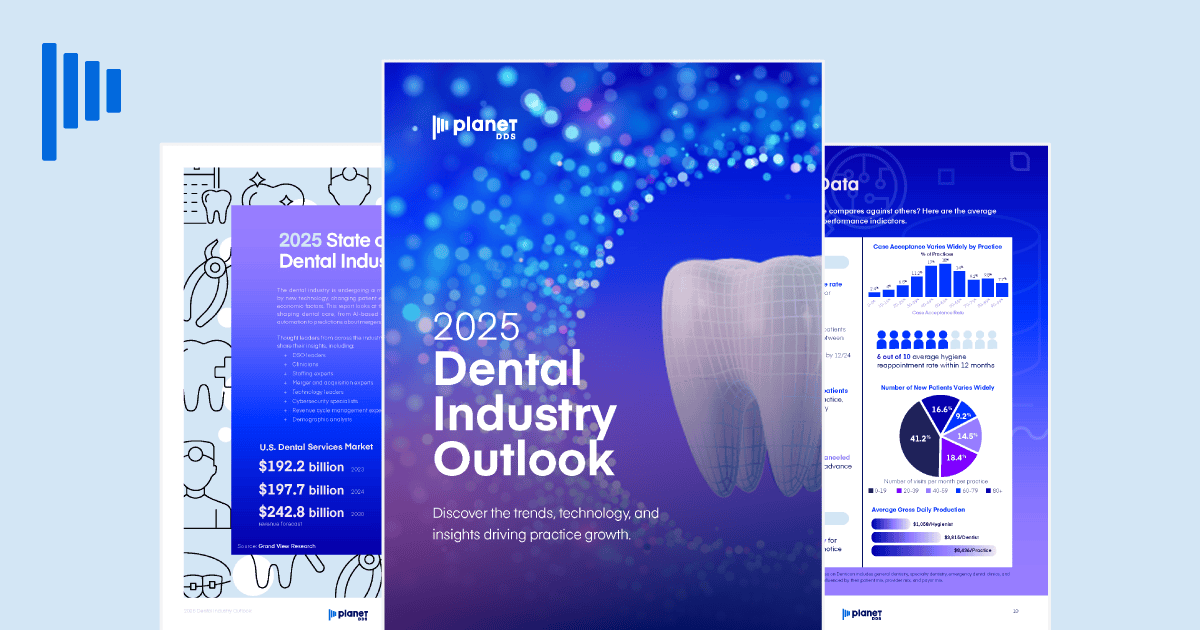Teledentistry Pt. 2: How to Use Teledentistry to Connect with Patients

The question – “what is teledentistry?” is being asked and answered a lot these days. Now that it’s being embraced as virtual option the emerging question is how to use teledentistry to connect with your patients.
Let’s review – “what is teledentistry?”
Keep in mind that teledentistry is the relatively new virtual player in the broader category of telehealth or telemedicine (thanks to COVID-19).
Generally speaking, telehealth delivers health education or health related services from a distance. Now that safe distancing is the norm it makes telemedicine and teledentistry all the more relevant.
Like the broader category of telehealth, teledentistry has many applications:
- Live video chat
- Secure storage and delivery of images, video, and digital impressions
- Remote patient monitoring (RPM) and the ability to deliver digital patient data and supportive care information
- Mobile health care and health education delivered virtually to available smartphones and digital devices
Who does teledentistry serve?
The benefits of teledentistry continue to evolve. Your reach has a dental provider extends to…
- Patients in health compromised circumstances – such as the impact of COVID-19 on care access.
- Patients in rural areas without easy access to dental care or who would otherwise postpone care diagnosis.
- Dental hygienists providing virtual access to preventive care screenings and follow-up protocols.
- Specialist connections and referral hand-offs.
The applications are advancing as familiarity with the technology is on the rise.
And DSOs (Dental Service Organizations) are equally supported by teledentistry.
- Remote access to quality control and productivity systems across their organization(s).
- Virtual communication capabilities for connecting multiple practices in real-time for training or case management.
Staying on theme… let’s explore the more specific benefits of how teledentistry can be applied to certain segments of your patient base.
How to use teledentistry to connect with patients
This raises the deeper question of how to help your patients embrace teledentistry as a virtual care option. Again, many will find it a welcome solution in the COVID-19 era.
Overall, it’s essential to educate new and existing patients about how teledentistry can conveniently, safely, and effectively lead to improved oral health.
Generational considerations and teledentistry
It’s common to assume that a younger patient base would more quickly embrace virtual healthcare solutions. They somewhat live online and most technology isn’t necessarily intimidating to them.
The older or aging population is no less accustomed to technology. Although their practical adoption of it might be slower or lacking in some instances.
That said, your older patient base is a prime demographic for remote (virtual) dentistry because of…
- Mobility challenges
- Transportation issues
- Existing health complications
For either generation (and those in between) the option to consult virtually with you adds a layer of convenience and safety to your services.
Communication strategies for promoting teledentistry
The sooner you inform your patients of your teledentistry options the better.
Email or text your patient list once you’re prepared to go public with your provision of virtual dentistry.
Reassure your patients that their health and personal data is (as always) safe, secure, and private. Inform them about encryption protocols for any data transfer.
Provide a seamless remote appointment experience that mirrors what they experience in person. As much as possible, personalize the teledentistry experience.
Use the current wave during COVID-19 and beyond to promote teledentistry to new and current patients. Many will see it as a natural option that helps them feel safer about their interaction with your services.
Implementation protocols for offering teledentistry to your patients
The systems you have in place for implementing teledentistry are vital to how your patients receive it. As you would anticipate, virtual dentistry is an entirely different environment.
Your expertise is the same with teledentistry. It’s the interactive experience that’s different.
1. Define your approach
Be clear on what services you’re prepared to provide remotely. Some will translate effectively…others not so much.
- Determine what services are essential to in-office and what is effective remotely. Keep in mind the virtual consult and/or related diagnosis will most likely require in in-office appointment when necessary.
- Designate who will be involved in a particular virtual visit. Is it necessary for a dental hygienist to join you or a dental assistant to manage the details of your conversation?
- Decide what the virtual appointment will look like. Map out each scenario. Orient your team. And do a test-run to get each team participant comfortable with the technology and the virtual environment.
- Download and review each virtual visit to improve your process. Ask for feedback and reviews from patients to help enhance your approach.
2. Develop your schedule to include virtual appointments
Your teledentistry schedule should naturally interface with your in-office schedule. Remember that a virtual visit will most likely require less scheduled time but will often require a production block when a remote diagnosis leads to treatment.
- Review your weekly schedule for the optimum times for virtual visits. Build in flexibility to allow for a virtual consult when necessary.
- Remember that time convenience will increase how your patients adopt the virtual option. Are certain days/times better than others? Survey your patients on occasion to determine when virtual appointments are more accessible, etc.
- Remind your team routinely that teledentistry is a pathway to increased production.
3. Determine where you will conduct virtual dentistry in your dental office
Physical location is vital to a private and uninterrupted virtual patient visit.
- Dedicate an exam room or another available office space for conducting your virtual visits. Have the necessary technology and related considerations such as lighting, internet bandwidth, etc. tested and in place.
- Make sure the space is capable of accommodating additional team members when necessary.
- Confirm that your off-site or at-home consultations are secure. HIPAA regulations apply there too.
4. Document each virtual visit
Treat your teledentistry consults as you would a face-to-face consult. Documentation is equally essential.
- Use your dental practice management software to log/record the virtual visit details.
- Set up your documentation process to include accounting, billing, and prescription details.
- Clarify and communicate the check-in (log-in) process for each patient’s virtual appointment.
5. Deploy the proper teledentistry insurance coding
Keep in mind that teledentistry coding is additional to the treatment that you deliver to a patient. And also understand the type of teledentistry service you’re providing – real-time or a review of related referral materials?
The following codes are provided by the ADA (American Dental Association):
- D9995 teledentistry – synchronous; real-time encounter. Reported in addition to other procedures (e.g., diagnostic) delivered to the patient on the date of service.
- D9996 teledentistry – asynchronous; information stored and forwarded to dentist for subsequent review
The ADA clarifies that teledentistry codes…
”…“exist to document and report the additional costs associated with delivery of services when a patient and their dentist are not in the same physical location.”
For example, the codes for teledentistry function in the same way as a D9410 (house call) and D9420 (hospital call) codes. They apply when a provider cannot be physically present with their patient.
6. Decide to use teledentistry according to your governing regulations
It’s vital to consult with your state/region governing board before deciding to provide virtual dentistry. COVID-19 has loosened the restrictions for many states/regions although it’s uncertain whether those permissions will remain in the future.
Virtual dentistry has been granted some latitude during the pandemic.
”According to the ADA, practices can use, “FaceTime, Facebook Messenger video chat, Google Hangouts video or Skype, to provide telehealth without risk.
Alternatively, practices CANNOT use the following during the pandemic: “Facebook Live, Twitch, TikTok, and similar video communication applications that are public facing.”
Again, it’s best to stay current with the ADA about all things teledentistry now in and in the future. And follow HIPAA-compliant protocols to assure patient privacy at every level.
As you consider and use teledentistry remember there are many “faces” of virtual or “contactless” technology.
Denticon’s suite of contactless dental technology solutions now includes Online Appointment Booking, Online Patient Registration, Curbside Check-In, and the Patient Portal.
Contact us now about those contactless patient care solutions plus the soon to be released Contactless Payment portal.



